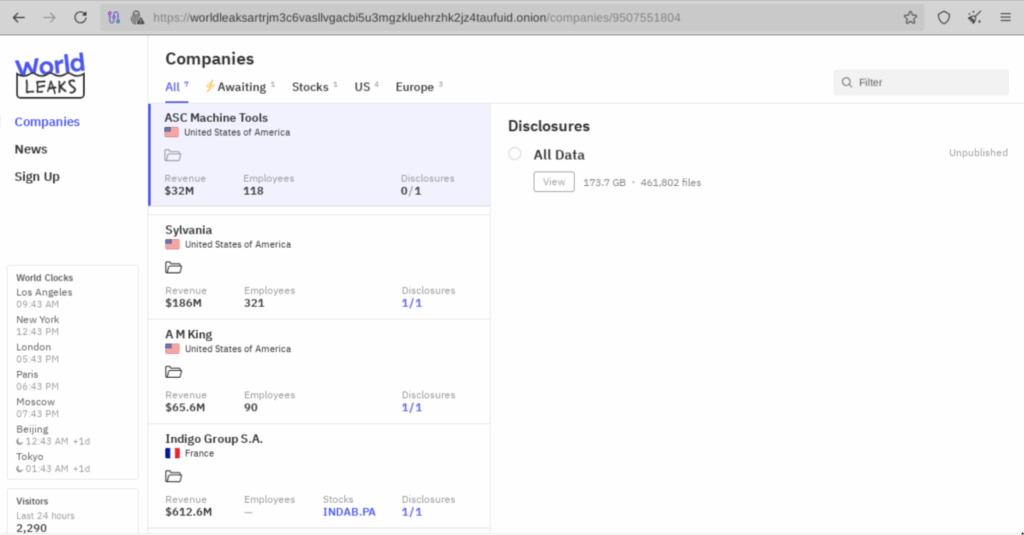Despite significant advancements in cybersecurity defenses, ransomware continues to be one of the greatest financial and operational risks facing organizations worldwide—with Flashpoint finding that ransomware attacks increased by 179% compared to the 2024 midyear.
This continuous growth of ransomware is driven by ransomware-as-a-service (RaaS) operators and affiliates. In this post, we take a deeper look into the ransomware landscape, highlighting new emerging RaaS that every organization should be paying attention to in 2025.

The Rise and Fall of RaaS in 2025
Over the past year, Flashpoint has observed the emergence of multiple new RaaS groups. Some of these groups appear to have already shuttered or maintained blogs that are currently available.

Outside of the top groups of ransomware groups, Akira, Clop, Qilin, Safepay, and RansomHub, there are several other groups that need to be watched. These groups are notable for their associations and some of their tactics, signaling a change in ransomware operations.
1. Extortion over Encryption
Multiple groups appear to prefer a pure extortion play. Ransomware groups will traditionally encrypt files before exfiltrating them, charging for both the decryption key and to prevent data from being leaked. Extortion groups like World Leaks, previously known as Hunter’s International, ransoms without encryption. Additionally, RansomHub has been observed occasionally employing this tactic, as well as emerging groups like Weyhro.

2. Family Ties
Ransomware rebranding is a known phenomena, where shuttered groups will often relaunch under a different name. Additionally, ransomware groups may also use leaked ransomware source code in their operations. For example, top ransomware group SafePay shares code with LockBit. The fingerprints of other notable ransomware groups, like Conti, are also apparent in the codebase of other ransomware groups. There is also overlap in other groups, like Devman and DragonForce.

3. AI Tooling
Funksec is one of the few groups openly using LLMs in their tooling. The group uses AI-generated phishing templates, and developed the malicious chatbot dubbed “WormGPT.” It is possible that additional groups will integrate the use of LLMs or chatbots within their operations in 2025.
4. What Is Old Is New Again
In January 2025, the shuttered ransomware group Babuk appeared to return as Babuk v2. Upon further analysis, the page appeared to be a group using the name notoriety of Babuk, and recycling previous ransomware victims from other ransomware groups. Data appearing on leak sites will often appear across other venues, like forums and Telegram channels, after the initial incident.
5. Access Vectors
While AI tooling may result in improved phishing campaigns, threat actors will continue to exploit disclosed but unpatched vulnerabilities, as well as infostealers as initial access vectors. Vulnerabilities in remote monitoring and management (RMM) remain targets for ransomware groups. Once access is gained, threat actors will often use Living off the Land (LOTL) techniques to escalate privileges.
Falling Off in 2025
While 2025 has introduced new RaaS into the ransomware landscape, it has also led to the downfall of others. Flashpoint has observed over 29 ransomware groups are no longer active going into 2025. However, while these illicit organizations are not currently operating, it does not mean that they are entirely gone—as it is common for RaaS groups to simply rebrand, reemerging as a new entity.
LockBit
For the past several years, LockBit has consistently been the most prolific RaaS operation, claiming over 3,500 victims since their first appearance in 2019. Now, the group is failing to even rank among the top fifteen most active ransomware groups—leading to the rise of other groups such as Akira.
Several factors have contributed to LockBit’s fall from grace; most notably global law enforcement action via Operation Cronos in February 2024 and subsequent sanctions against LockBit’s founder, Russian national Dmitry Yuryevich Khoroshev. Despite these events, LockBit managed to hold momentum through the remainder of 2024. However, the final blow to their operations occurred in May 2025, where an affiliate was breached and exposed key elements of the ransomware’s infrastructure. Flashpoint has not observed any new victim postings since May 9, 2025.
BlackCat (AKA Noberus / ALPHV)
2024 has marked the end of other notorious groups like the BlackCat ransomware collective, whose victim posts once rivaled LockBit and Clop. Known for its highly sophisticated ransomware and triple extortion model, the group was taken down by law enforcement in December 2023. The group relaunched and announced its official shutdown in March 2024. Since the shutdown, Flashpoint has not observed any new posting of BlackCat / ALPHV victims. Additionally, our analysts have found that many BlackCat affiliates have joined the newly formed RansomHub group.
Infiltrating threat actor communities, Flashpoint analysts sourced illicit communications claiming BlackCat itself was a rebranding of the once prominent Darkside / BlackMatter ransomware gang. This highlights a trend of continuous cybercrime where “defunct” RaaS operations are often not eliminated, instead reemerging or rebranding as a new entity.
Protect Against Ransomware Using Flashpoint
While the threat landscape is constantly evolving, the need for proactive and comprehensive defense remains the same. Staying ahead of cybercriminals and illicit marketplace trends requires comprehensive and actionable threat intelligence.
For a deeper dive into the trends that define today’s threat landscape, download Flashpoint’s 2025 Global Threat Intelligence Index. To see how Flashpoint’s real-time, human-curated, and AI-assisted intelligence can help your team counter ransomware groups, request a demo today.


